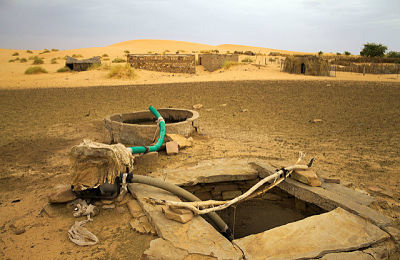The Complex Issue of Water Quality in Mauritania

Water quality in Mauritania is affected by contradictory factors—the region receives little rain but is also at near-constant risk of flooding.
The southern part of the country gets 26 inches of rain annually while Nouakchott, the capital, only gets 5.5 inches. This isn’t too surprising, considering that Mauritania is mostly made up of desert and averages a temperature of over 100 degrees Fahrenheit for more than half the year, but most of the rainfall occurs over a short period of time in August and cannot be properly absorbed into the ground.
This absorption problem is due to the fact that Nouakchott is below sea level and therefore prone to frequent floods caused by rising sea levels. Rainfall only adds to pre-existing pools of stagnant water. And, because Mauritania lacks permanent drainage infrastructure, the water becomes a carrier for illnesses such as malaria and dengue fever. This is compounded by the fact that many in the region who live in poverty lack plumbing and are forced to dispose of solid waste in the stagnant water. Waste, in turn, damages temporary drainage setups.
Lacking water infrastructure for drainage, sanitation, plumbing and everyday use, the people of Mauritania rely on vendors for their drinking water. Vendors are sometimes miles away, so people commonly transport water in barrels or on donkeys.
Very few trees survive in Mauritania due to its desert climate as well as the fact that the rising water is exclusively salty.
Despite the many conflicting factors that threaten water quality in Mauritania, a 2011 review of the country’s status contended that there had been significant increases in the percentages of both rural and urban populations’ access to drinking water from 1990 to 2008, especially in the case of rural populations, which saw a 21 percent increase. The report identifies small piped networks and water wells as structures that are effective in helping people in rural areas of Mauritania access clean water. Unsurprisingly, the report claims “major financing” is needed to build more permanent supply and sanitation solutions.
– Caroline Meyers
Photo: Flickr
